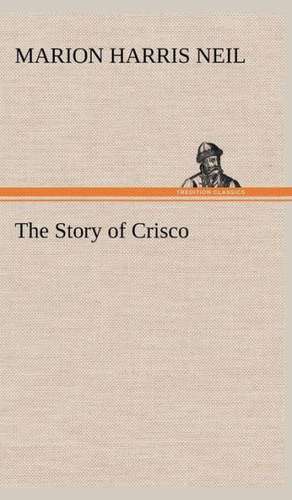The Story of Crisco
Autor Marion Harris Neilen Limba Engleză Hardback – 30 noi 2012
Crisco's history began in pre-Civil War America when William Proctor, a candle-maker, and his brother-in-law James Gamble, a soap-maker, joined forces to compete against the other candle- and soap-makers in the Cincinnati area. By cornering the market on cottonseed oil, Proctor and Gable sidestepped the meat packer's monopoly on the price of lard and tallow. With electrification, the need for lard-based candles decreased and the new product needed a new market. With a wealth of cottonseed oil at their disposal, the answer was Crisco. In order to market their product, Proctor & Gamble distributed for free Marion Neil's 1921 cookbook, The Story of Crisco. It provides a history of Crisco, information on the benefits of the product to families, as well as a 615 recipes all using the product.
| Toate formatele și edițiile | Preț | Express |
|---|---|---|
| Paperback (3) | 110.43 lei 3-5 săpt. | |
| Applewood Books – 31 dec 2007 | 110.43 lei 3-5 săpt. | |
| Echo Library – 11 apr 2007 | 144.67 lei 38-44 zile | |
| Tredition – 4 dec 2012 | 299.75 lei 6-8 săpt. | |
| Hardback (1) | 377.99 lei 6-8 săpt. | |
| TREDITION CLASSICS – 30 noi 2012 | 377.99 lei 6-8 săpt. |
Preț: 377.99 lei
Nou
Puncte Express: 567
Preț estimativ în valută:
72.33€ • 75.86$ • 60.21£
72.33€ • 75.86$ • 60.21£
Carte tipărită la comandă
Livrare economică 01-15 aprilie
Preluare comenzi: 021 569.72.76
Specificații
ISBN-13: 9783849182984
ISBN-10: 3849182983
Pagini: 404
Dimensiuni: 127 x 203 x 24 mm
Greutate: 0.53 kg
Editura: TREDITION CLASSICS
ISBN-10: 3849182983
Pagini: 404
Dimensiuni: 127 x 203 x 24 mm
Greutate: 0.53 kg
Editura: TREDITION CLASSICS
Descriere scurtă
Extras
The culinary world is revising its entire cook book on account of the advent of Crisco, a new and altogether different cooking fat. Many wonder that any product could gain the favor of cooking experts so quickly. A few months after the first package was marketed, practically every grocer of the better class in the United States was supplying women with the new product. This was largely because four classes of people--housewives--chefs--doctors--dietitians--were glad to be shown a product which at once would make for more _digestible_ foods, more_economical_ foods, and better _tasting_ foods. (From Introduction.)
